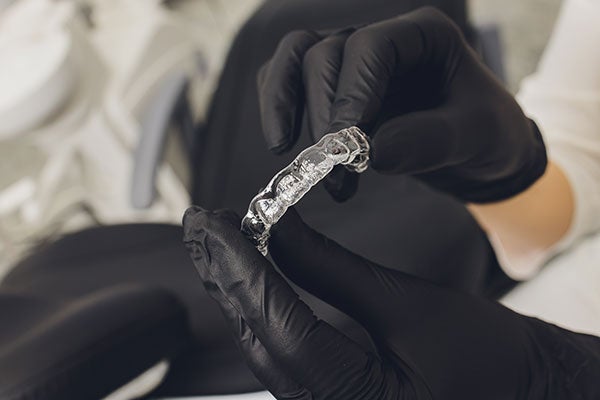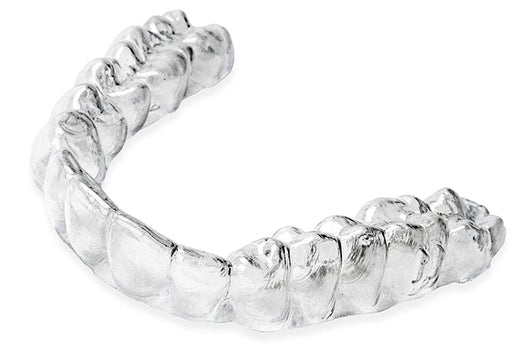Bay Material’s many years of experience with developing, manufacturing and marketing thermoplastic materials for orthodontic applications have taught our development team some important lessons. The ideal clear aligner would:
● Provide firm but gentle teeth movement force continually over 7-14 day wear period, as prescribed.
● Be comfortable to wear, as well as easy to insert and remove.
● Appear transparent and remain transparent throughout the full course of use.
Our original Zendura A material meets these important performance objectives … but we’re always aiming for improvement. Could there be a material flexible enough to reduce the initial aligner insertion force required to insert an aligner, increasing patient comfort, and also provide significantly better teeth movement force throughout an aligner stage? Could the material resist deformation and also be highly stain resistant? Could a material do that while being as tough, effective and safe as Zendura A?
An extensive research and development program showed that no single material could deliver this leap in performance and durability. So, we found a way to combine high-performance materials using a dual-shell structure.
A Unique Trilayer Structure
Zendura FLX combines an elastomeric inner core to provide flexibility and elasticity with a hard outer shell to increase elasticity and firmly grip the teeth.
The tough outer shell precisely hugs the teeth, helping to affect the desired tooth movements like rotation and extrusion and intrusion. It also provides a tough barrier to protect against grinding (and bruxing) from the opposing dental arch.
The inner core’s ability to provide exceptional elastic rebound is the real magic of Zendura FLX.
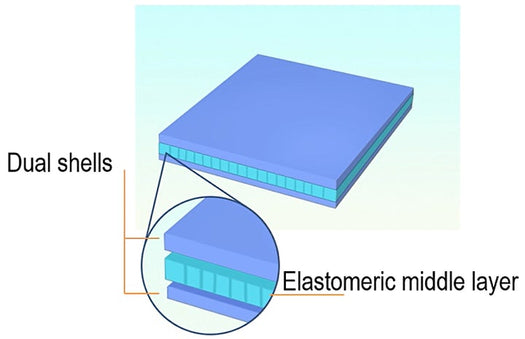
How Zendura FLX compares to commodity materials
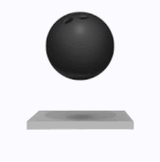
Some commodity plastic materials offer rigidity and strength... but little elasticity. When deformed, their ability to rebound to provide elasticity - and sustained teeth movement force - is limited.
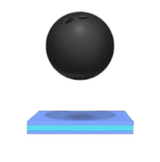
The elastomeric middle layer of Zendura FLX combine with the hard outer shell to deliver the ability to rebound and recover from mechanical deformation, delivering up to 150%-plus better teeth movement force than competing materials over a 7-10 day wear period.
The elastic properties we engineered into Zendura FLX result in some amazing 3-dimensional properties. Forces applied in any direction – including rotational forces – receive the rebound response engineered into FLX!
How Zendura's FLX rebound capabilities make it unique
The nature of thermoplastic materials is to adapt to their environment (forces applied to them) over time. This response is exaggerated at higher temperatures, such as at the temperature inside the mouth (the inner oral temperature). This means that ALL thermoformed aligner materials will enter the mouth with a higher force placed on teeth, then decline in force over time. This translates into a good chance of pain for the patient when the aligner is inserted … and possibly limited and rapidly declining tooth-moving force in as little as one or two days.
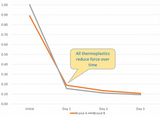
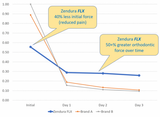
Zendura FLX exerts 40% lower insertion force than other aligner materials and also delivers significantly better patient comfort throughout the entire treatment stage. This much better patient comfort combined with Zendura FLX’s 150%-plus better teeth movement force opens up wider range of treatment protocols.
It also allows clinicians to consider shortening wear periods and overall treatment time.
